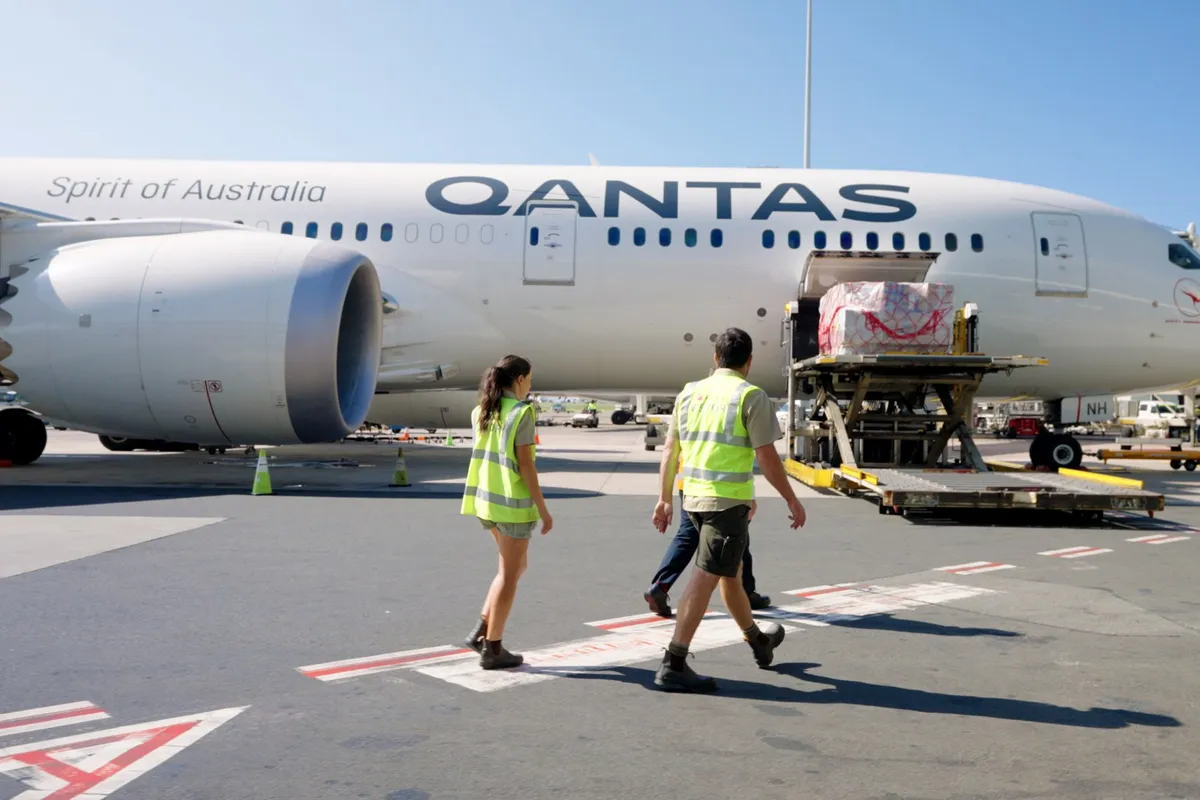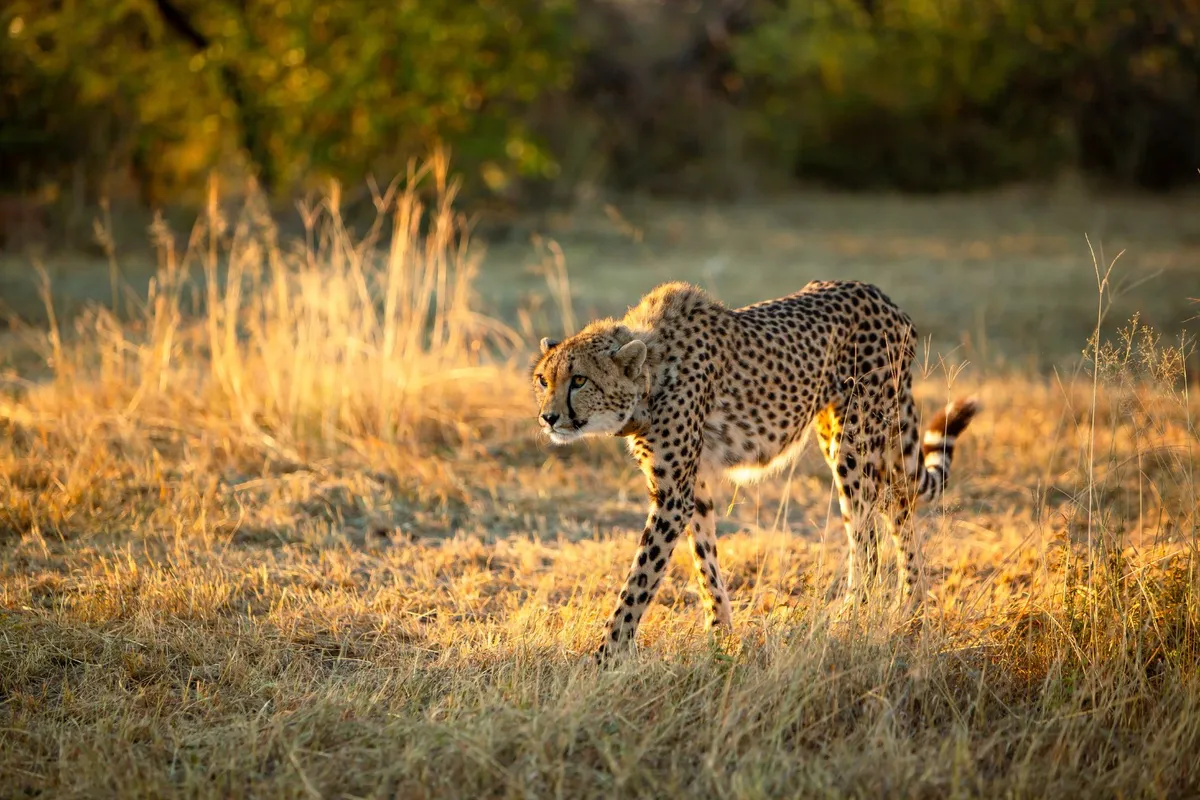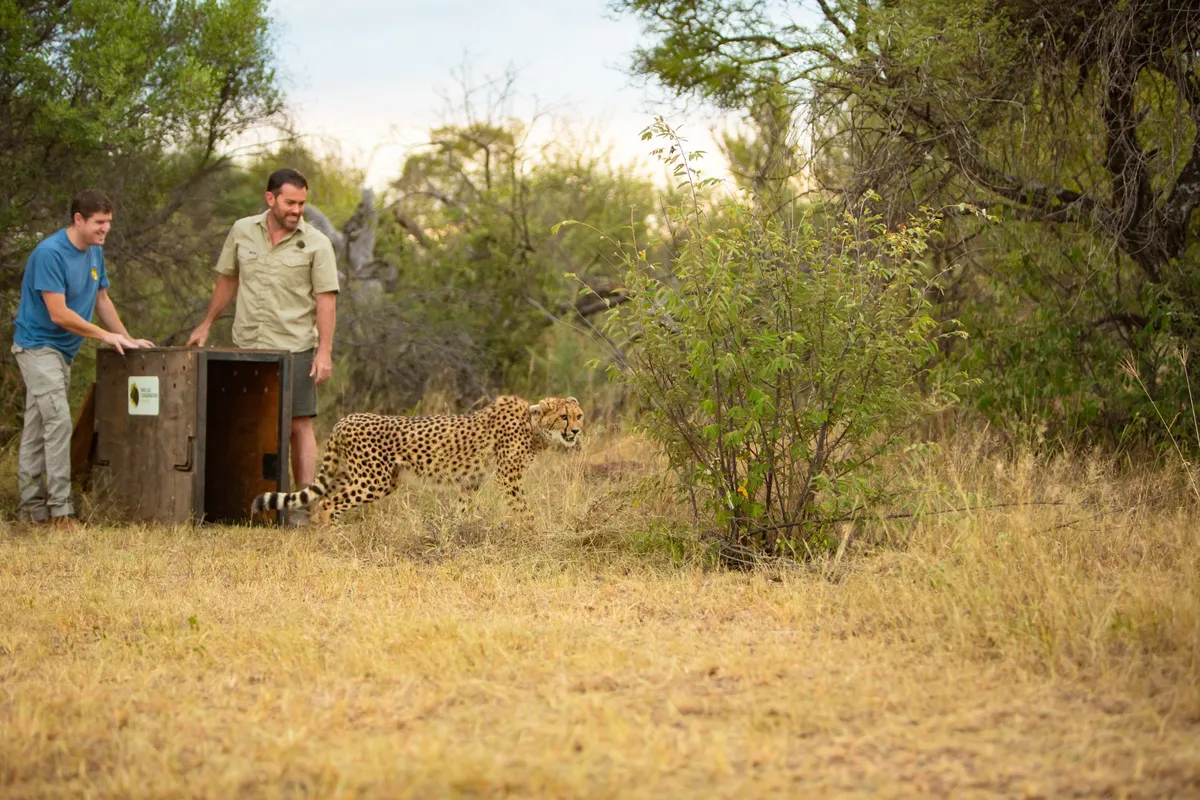[social_warfare]
From Sydney to South Africa, a New Chapter for Cheetah Conservation
In a heartwarming leap towards innovative conservation, Edie, a 1.5-year-old cheetah born in captivity in Sydney, Australia, has taken her first free steps in the wild expanses of South Africa’s Mziki Private Game Reserve.
This event marks a pioneering moment in the field of wildlife conservation, focusing on the importance of genetic diversity and species revival. The relocation of Edie from the confines of the Wild Cat Conservation Centre to the savannas of Africa narrates a compelling story of hope, challenge, and a new strategy in conserving one of the planet’s fastest mammals.

The Beginning of Edie’s Journey
Edie’s life began under the careful supervision of conservationists at Sydney’s Wild Cat Conservation Centre. Born in September 2022, she represented a beacon of hope—a living symbol of what might be possible in the realm of species preservation. Her journey from Australia to Africa was facilitated by a coalition of conservation bodies including the Wild Cat Conservation Centre, WeWild Africa, The Aspinall Foundation, The Metapopulation Initiative, and Mziki Private Game Reserve.
Tony King, the Conservation and Reintroduction Coordinator for The Aspinall Foundation, shed light on the rigorous preparations undertaken to equip Edie for the wild. “The transition from a zoo environment to the wild requires significant adjustments. We worked on enhancing Edie’s physical fitness and adjusting her diet. More crucially, we had to fine-tune her innate predatory instincts, which are vital for her survival in the wild,” King explained.
Watch the moment Edie was released into her new home in South Africa’s Mziki Private Game Reserve. Credit: Wildcat Conservation Centre & Wewild
Preparation for a Wild Life
The preparations for Edie’s rewilding were extensive and carefully planned. Her training involved altering her diet from prepared meals to raw, whole carcasses, simulating the conditions she would face in her natural habitat.
Her trainers also introduced controlled live prey hunts to sharpen her hunting techniques. “Cheetahs have innate predatory skills that need honing. They must learn how often to hunt, optimizing their energy use in the wild, which is vastly different from the frequent feeding schedules in captivity,” King noted.
Strategic Habitat Selection
Choosing an ideal release location was paramount. The selection criteria were stringent, avoiding regions populated by apex predators like lions and hyenas, which pose significant risks to a reintroduced cheetah. “Our site selection process is critical.
We ensure that each location offers the best possible chance for survival and integration into existing wildlife populations,” King elaborated. Mziki Private Game Reserve was selected for its favorable conditions and the absence of competing large predators, providing Edie a real chance at establishing herself.

The Broader Conservation Impact
The decline in global cheetah populations has been alarming, with the species now listed as Vulnerable on the IUCN Red List. Current estimates suggest that only about 7,000 cheetahs remain in the wild. The loss of habitat, human-wildlife conflicts, and poaching have decimated their numbers. Initiatives like Edie’s reintroduction aim to bolster genetic diversity and strengthen the genetic pool of the wild populations.
“Genetic diversity is crucial for the health and resilience of any animal population. By introducing genetically distinct individuals like Edie into the metapopulation, we’re not just saving a single animal—we are enhancing the entire species’ ability to adapt and survive,” King asserted.

Looking to the Future
As Edie adapts to her new environment, conservationists eagerly anticipate her contribution to the gene pool, particularly through future offspring. “The real success will be witnessed in the survival and integration of her future cubs into the African cheetah population, spreading her unique genetics across the metapopulation,” said King.
Edie’s relocation from Sydney to South Africa symbolizes more than just a physical journey—it represents a paradigm shift in conservation strategies, emphasizing a holistic approach that includes genetic health, suitable habitat selection, and careful monitoring. As she explores her new home, Edie carries with her the hopes of conservationists and animal lovers worldwide, serving as a living bridge between continents and cultures in the shared mission of wildlife preservation.
Reflecting on Edie’s story, it’s evident that the future of wildlife conservation hinges on innovative approaches like these. By moving beyond traditional methodologies and embracing global collaboration and genetic management, we can hope to see a future where humans live in harmony with, and not at the expense of, our planet’s remarkable creatures. Edie’s journey inspires us to think differently about how we interact with and protect our natural world.
